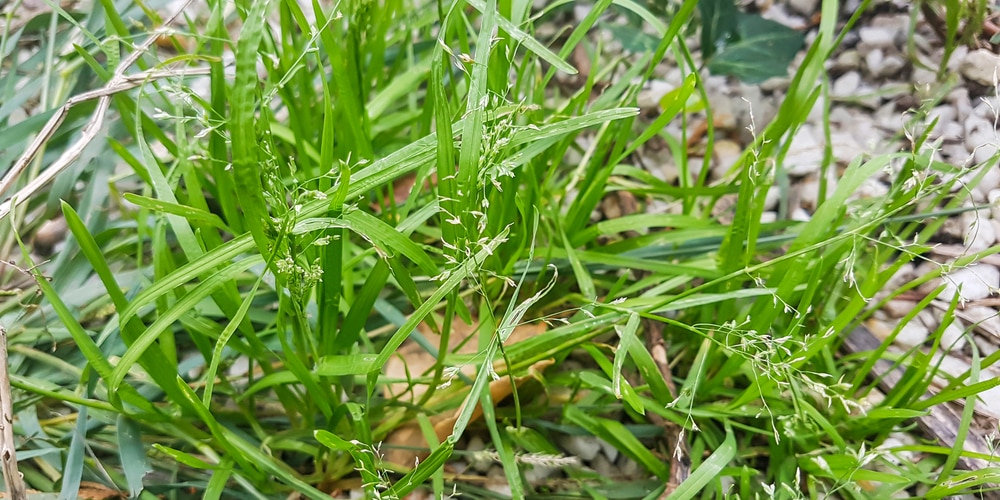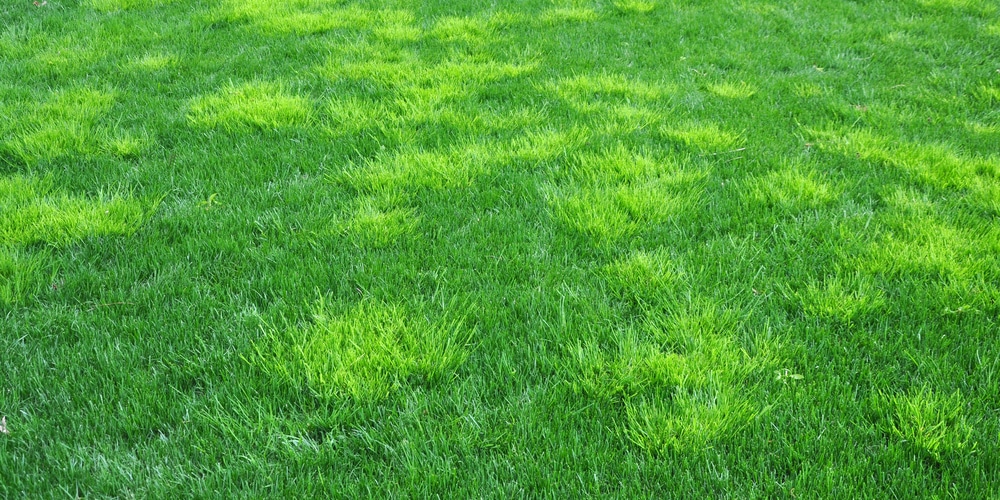Nothing is more frustrating than working hard to have a nice, green lawn, only to find that it’s being taken over by poa annua. Not to worry, though! There are a few simple ways to kill poa annua and keep your Bermuda grass looking its best.
About Poa Annua

Poa annua, also known as annual bluegrass, is a weed that commonly invades lawns and gardens on annual basis. As a cool-season grass, it thrives best in temperatures that are between 60 and 70 degrees Fahrenheit.
This difficult-to-control weed typically comes up in the late fall months and overwinters in a vegetative state. It then starts to grow rapidly in the spring, setting seed heads by early summer. Poa annua is a rather persistent weed, and it can take over your lawn if it’s not controlled.
While controlling poa annua is a challenging task, it’s not impossible. You just need enough perseverance, good foresight, and on-point timing.
3 Simple Ways to Kill Poa Annua in Bermuda Grass
The best way to control poa annua is to prevent it from growing in the first place. However, if you already have a problem with this weed, there are a few things you can do to get rid of it.
1. Hand-pulling
One of the most effective ways to control a minor poa annua invasion is by hand-pulling it. This method is best done in the fall or spring when the soil is moist. Moist soil makes it easier to pull up the entire root system, which prevents the weed from growing back.
To hand-pull poa annua, simply dig around the weed with a spade or trowel to loosen the soil. Then, pull the weed up by the root system and dispose of it in the trash.
You may need to repeat this process several times throughout the year to ensure all of the weeds are removed.
2. Maintain a dense turf
Poa annua thrives in areas of weak or thin turf. Maintaining a dense, healthy lawn is one of the best ways to prevent this weed from taking over. A strong, competitive turf will crowd out poa annua and prevent it from germinating and growing.
To have a healthy, dense lawn, be sure to water, fertilize, and mow it as needed. In some cases, it’s necessary to have your soil tested for any kinds of deficiencies. That way, it will be easier to correct the problem and prevent weeds from growing in the future.
3. Use a pre-emergent herbicide
If cultural methods aren’t enough to control your poa annua problem, you may need to resort to chemical control measures. And the best part is that you can keep your lawn free of poa annua over the long term when using chemical control.
You just need to understand this weed’s life cycle so that you can get the timing right. Remember the perseverance we mentioned earlier? You’ll need that too since it can take as many as two years to fully eradicate poa annua.
There are a few different herbicides that can be used to kill poa annua, and these are also effective at controlling other grassy and broadleaf weeds on the lawn. The 6 most effective pre-emergent herbicides for poa annua are:
- Scotts WeedEx
- The Andersons Barricade Weed Control
- Scotts Crabgrass herbicide
- Bonide DuraTurf Crab-Grass Weed Control
- Quali-Pro Prodiamine
- Fertilome Turf & Ornamental Weed and Grass Stopper
To apply these herbicides, simply follow the product label instructions. But in general, you’ll want to apply them to your lawn in early fall (September to October, depending on where you live). That way, you can tackle the fall germination.
After that, you can do a second application to prevent spring germination. This application is best done during the late winter and/or early spring (Jan to February).
If trying to control poa annua on patches that are not covered by the grass, you can use a glyphosate-based herbicide such as Hi-Yield Killzall. Just be sure to avoid spraying this next to any desirable plants as it will kill them too.
Final thought
Poa annua is a difficult weed to control, but it’s not impossible. Always keep in mind that the best way to handle this weed is to prevent it from growing in the first place.
And when controlling it, take preventative steps such as cleaning the underside of your mower deck after mowing an infected area. If you’ve hired lawn maintenance services, verify that they’ve cleaned their mowers as well.
By following all the tips mentioned in this article, you can kill poa annua and keep it from taking over your lawn for good!
